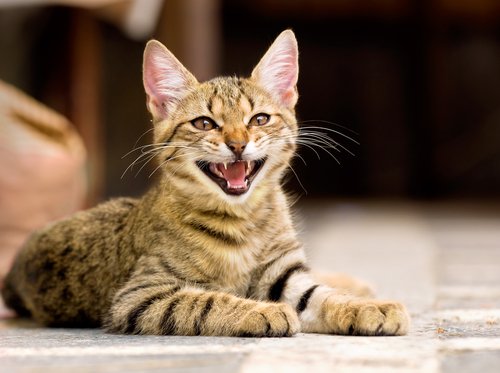Feline Communication: Listen to Your Cat

Feline communication is how cats express themselves. This form of communication takes place among animals or their owners. By trying to understand their behavior, you will create a better bond with your cat.
There are two ways cats communicate. One is through natural instinct and the other is through their behaviors. A cat can demonstrate the fist by marking his territory like most animals do.
By using their natural scent, cats leave traces of themselves as they move to one place to another. As they mark their territory, they leave messages to other cats.
Cats are known for being independent and not having any attachments. However, it has been shown that felines enjoy company just like any other domesticated animals. To understand how a cat feels, you can analyze its behavior.
Feline Communication through their Behavior
Sometimes you might confuse the sounds your cat makes with a child’s voice. Felines have the ability to imitate tones of voice and in some cases, even seem like they’re saying words.

Cats are also very expressive due to the number of muscles in their faces. You can learn to decipher their moods by learning to read their expressions.
For example, the position of a cat’s ears can show how it feels. When their ears are leaning forward, it indicates that they are feeling friendly towards you.
If their ears are facing away from you, this shows they feel threatened. When their ears are spread apart and bent to the sides, this means that they may be afraid.
Another body part that shows feline communication are the whiskers. If their whiskers are stretched out below their cheeks, this is a sign of fear.
On the other hand, if the whiskers are fan-shaped and extended to the sides, this means the cat is in a good mood. The same shape but extended forward is a sign of tension. If the whiskers are pulled back, this is sign of shyness.
The Flehmen response is a characteristic expression of cats. This takes place when they smell something they like. They wrinkle their upper lip in a manner that initially seems they are disgusted.
Basic Tips for Understanding Feline Communication
- Much of what a cat does speak for itself. Posture is a perfect example of this. A cat with its front legs bent is prepared to attack. When a cat feels unsafe, it bends its hind legs.
- They also speak through their tails. A straight tail that is slightly curved at the tip means that the cat is happy. Plus, if a cat’s fur is puffing out, this is a sign of excitement. On the other hand, a curled tail can also mean the cat is excited. If the cat hides its tail or keeps it low, this means the cat is scared or feeling shy.
- Another way of communication is through attitude. A cat might rub up against you to show that you belong to him. They often smell faces to recognize who you are. Plus, they extend their head towards you as a sign of greeting.
- The intensity of a cat’s meow indicates their level of need. Short, multiple meows are a greeting. A long meow demonstrates need. The greater the intensity of the meow, the greater the urgency is for the cat. Other common sounds, such as purring mean that the cat is feeling happy.

5. Nonverbal communication can also help you connect with your cat. Establishing eye contact with the cat can help you tell how the cat might be feeling. If you blink slowly while looking at the cat, the feline will understand the situation is safe. On the other hand, if you stare directly at the cat without blinking, he could interpret this gesture as a threat.
Repetition plays an important when trying to teach manners to a feline. Use your hands to indicate where you want the cat to go. You should give orders using a firm and forceful tone of voice. It’s important for the cat to recognize that you are the authority figure in the house.
